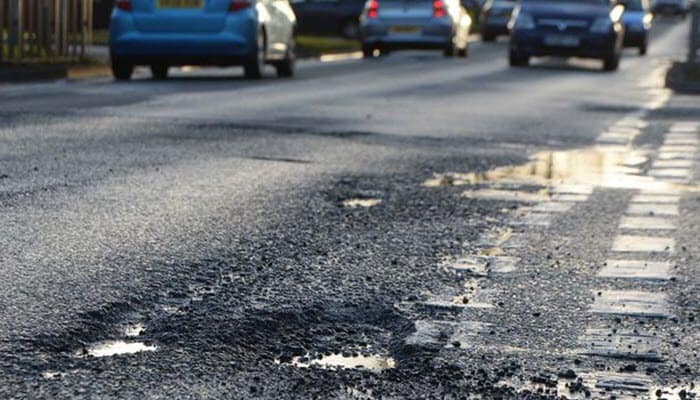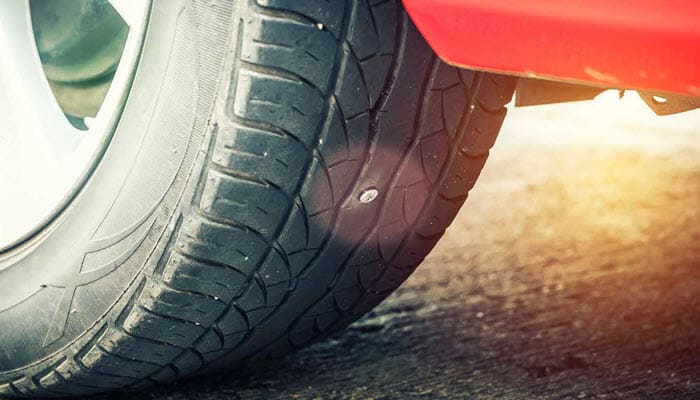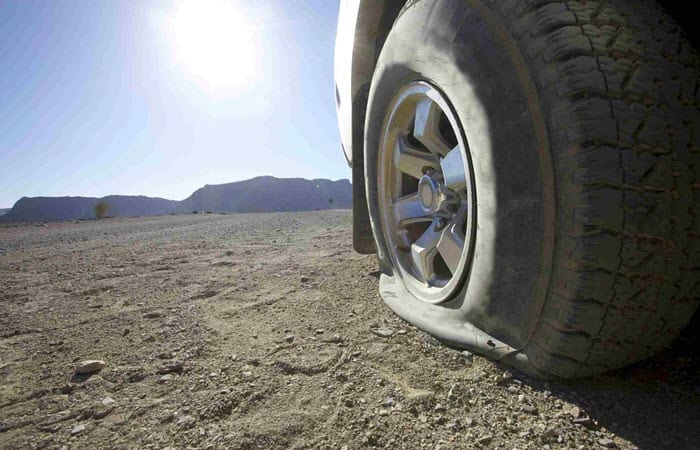Some drivers, if not all, have experienced having a flat tire at least once in their life. It can cause a lot of hassle, especially when you’re in a hurry to get somewhere.
But, flat tires aren’t just annoying. They can also be dangerous.
Do you know what causes your tires to go flat? And, what can you do to prevent having flat tires in the future?
Continue reading to know the 5 most common flat tire causes. We even added some tips on how you can avoid each situation.
What Causes a Flat Tire
Flat tires are caused both by things you can control and those you can’t. Let’s take a look at the most common flat tire causes more closely:
Sharp and pointed objects
These are the most common reason for having a flat tire. Sharp objects on the road like a screw, a piece of glass, or a nail can easily puncture your tire.
This can be avoided by driving around debris in the road if possible. Watch out for debris or any garbage on the ground if ever you’re driving in a parking lot.
Drive carefully when you’re in a bad road or are near a construction site.
Poorly-maintained roads

Uneven roads or potholes increase the chances of getting a flat tire. Aside from your tires, these can also damage your undercarriage and axles.
Avoid this situation by being extra careful when driving through bad roads. Make sure to reduce your driving speed to leave some space between your car and the car in front of you.
Doing this gives you more reaction time and to maneuver if you have to.
Normal wear and tear

This is something you can’t control. Everyday driving will slowly wear down the tread of your tires which gives them a higher chance of getting flat.
You can minimize this by not starting and stopping abruptly. Having your wheels regularly aligned, maintaining their recommended pressure, and having them regularly rotated can also help.
Leaking valve stem
If there are no signs of a puncture in your tire, there might be some leakage in the valve stem. A damaged valve stem is one of the causes why tires get flat.
What you can do is go to a car maintenance shop and let them check your car’s valve stem. They can have it replaced for you if it has become dirty or too old.
A wrong tire pressure level
Having the right tire pressure is important for a safe ride. If it is incorrect, it can lead to internal tire damage which can lead to serious road injury.
That’s why it’s important to have your tire pressure checked every month. You can do it yourself with a tire pressure gauge or have your mechanic do it for you.
Changing a Flat Tire
Why wait for road rescue when you can change a flat tire yourself? Change your flat tires with these simple steps:
- Park your car in a level surface – This is to prevent it from rolling. If you’re in the road, park away from traffic as much as possible and turn on your hazard lights.
- Put your car in “brake” and place it into “park” position – For manual transmission cars, put it in reverse or in first gear.
- Look for a heavy object – This could be concrete or a rock. Place it in front and at the back of the wheel, you’ll change.
- Grab the jack and the spare tire – Position the jack under the frame of the tire to be replaced. Make sure it’s in contact with your car frame’s metal portion.
- Pump the jack until it supports (not lifts) your vehicle – It must be firmly placed below your car. You know you’re ready to take out the tire when you see a light between the tire and the ground.
- Turn the wrench counterclockwise to remove the hubcap and loosen the nuts – There’s a wrench that comes with your car when you first bought it—that’s the one you use. But, make sure to only break the resistance and don’t take the nuts off completely.Since the wheel is still close to the ground while loosening the nuts, you’ll be sure it’s the nuts you’re turning and not the wheel itself.
- Pump the jack even more until the wheel is off the ground – Make sure it’s high enough so you can take the flat tire out and replace it with the spare.
- Completely remove the nuts – Turn the nuts counterclockwise until you can completely take them off.
- Remove the flat tire

However, it may stick because of rust.
When this happens, grab a rubber mallet and hit the inside half of the tire. You can even hit the outside half using the spare tire to loosen it.
Also, put the flat tire under your car. So when the jack fails, the flat tire will catch your vehicle to hopefully prevent any injury.
- Put the spare tire on the hub – Make sure to align it with the wheel bolts. You can put on the lug nuts once aligned.
- Tighten the nuts using your hand – Use a clockwise direction. Then with the wrench, use a star pattern (one nut across the other) to tighten the nuts as much as you can.Don’t tighten them completely in one go. Go in a star pattern and give each one a full turn until they’re all equally tight.
- Lower the jack without totally releasing your car – Once your car is lowered, tighten the nuts one last time.
- Bring your car completely to the ground and finish by removing the jack – Make final adjustments to the nuts and put the hubcap back. Return all your tools and the flat tire to the trunk and go to a mechanic to have your flat tire replaced.
Summary
Having a flat tire is almost inevitable when you’re a driver. Hopefully, we have taught you tricks to prevent flat tires or at least minimize the risk of it happening.



